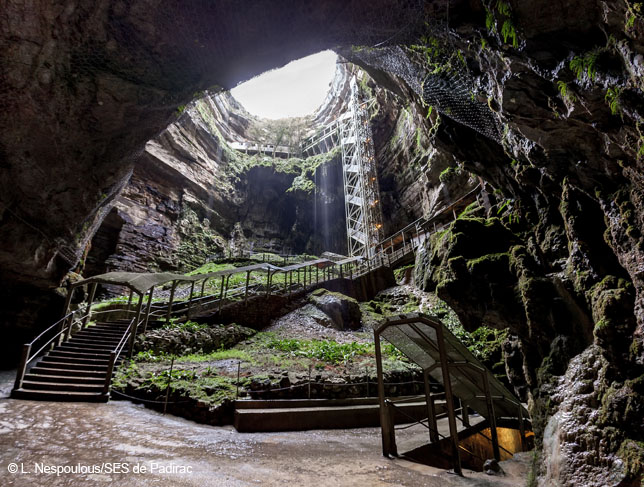It’s difficult to imagine anyone getting tired of exploring the many tourist sites in and around the Dordogne valley in France. If you fancy a change, you can also discover the exciting world under the Dordogne.
The Dordogne valley and the surrounding area has hundreds of caves or grottes as they are called in French. Driving through this stunningly beautiful part of France you will pass many tourist signs for these caves and other natural rock features.
Without doubt, the most famous cave is the world heritage site at Lascaux with its prehistoric paintings of animals. The original cave is now closed to preserve the site but a faithfully produced replica is open to the public.
 The area around Les Eyzies, located in the Périgord Noir, has many caves containing both cave art and natural features such as stalagmites and stalactites. If you’re exploring this area a visit to the Musée de Prehistoire will show you the history of the people and animals that lived here. The museum contains a large collection of artefacts and animal remains, many of which were found by archaeologists exploring nearby caves.
The area around Les Eyzies, located in the Périgord Noir, has many caves containing both cave art and natural features such as stalagmites and stalactites. If you’re exploring this area a visit to the Musée de Prehistoire will show you the history of the people and animals that lived here. The museum contains a large collection of artefacts and animal remains, many of which were found by archaeologists exploring nearby caves.
The hill top bastide village of Domme is worth a visit just to wander its medieval streets and marvel at the spectacular views. Under the main square is the entrance to a cave system that was used as a place of safety for the villages during more turbulent times and contains colonnades, stalactites and stalagmites.
The Gouffre de Padirac is just outside the Dordogne department in the Lot. A gouffre is formed when part or all of the roof of a cave collapses and produced a large chasm. This “Hole†in the landscape has a diameter of 35 metres and has a depth of 103 metres. Having descended into this chasm you then enter a cave system by boat and start your exploration of almost two kilometers of caves and tunnels.
Grotte de Rouffignac is perhaps better suited for families with young children or people who want to explore at a more leisurely pace. The huge cave system stretches over 8 kilometers on three levels. Visitors can explore 2 kilometers of caves and passageways onboard an electric train. So far 224 images of animal and just 4 of humans have been recorded. For some strange and unexplained reason, this cave system contains a large collection of mammoth pictures as opposed to other caves in the area that contain very few.
The site at La Roque Saint Christophe was created by the same forces of erosion that created the caves and grottes in the area. Here, and at several other places, a softer layer of rock was eroded in a cliff face leaving a harder layer of rock above and below. This created natural rock shelters that were used as far back as 5000 BC. Over time, man extended the shelters back into the rock and built front walls to form houses and even a fortress. The site was occupied up to 16th century and provided safety from the many times of troubles in the area. Even today, you still get a sense of what life was like in this town that clung to the cliff face.
Exploring under the Dordogne can be a fantastic holiday adventure but check the websites of the various caves for full details. Some caves may not be suitable for people with limited mobility or certain medical conditions. Some are more suitable for children than others. Reservations may be needed to some of the more popular sites and some sites restrict the number of visitors.






